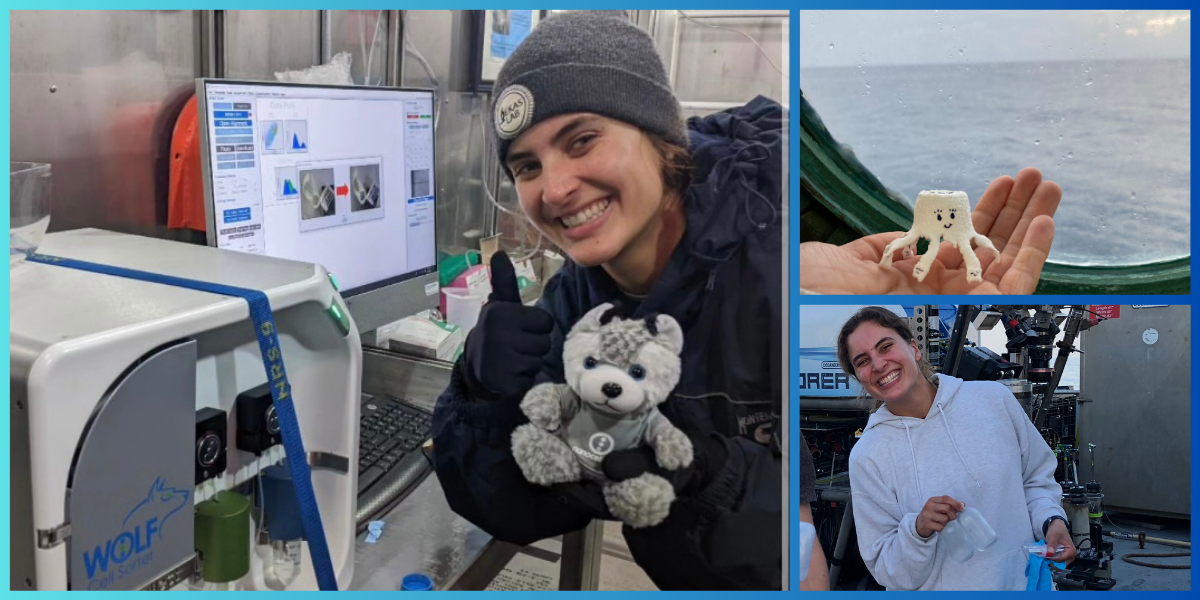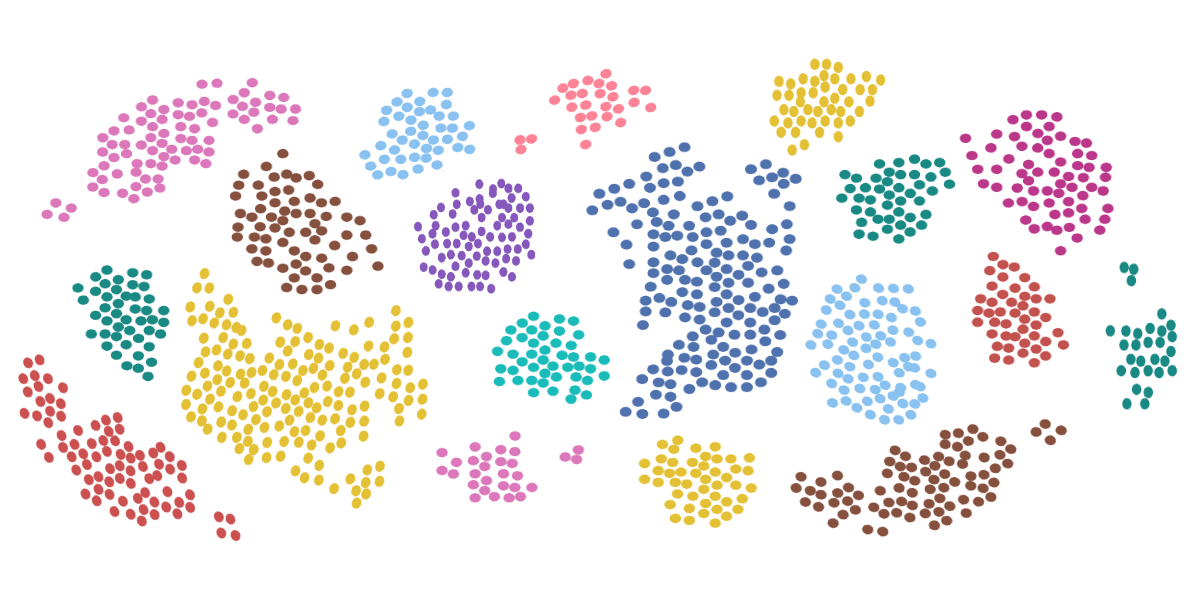The Utilization of CHO Cells for Cell Line Recombinant Protein Production

CHO (Chinese hamster ovary) cells have been at the forefront of animal cell biologists’ minds since the ‘50s. Since then, they have become the go-to for pharmaceutical companies and other research laboratories working to understand protein structures.
Just how are CHO Cells utilized in cell lines for recombinant protein production? And further, why are they the go-to cells?
As per usual with articles of this nature, it’s important to address all education levels; from new cell biologists to published researchers. If you’re versed in CHO cells and recombinant protein production, feel free to skip ahead to: Part 2 – Piecing It All Together where we also discuss the best cell sorter.
Otherwise, if you’re new, let’s first break down the basics.
Part 1 – The Underlying Concepts
To fully understand the topic at hand (the title of this article is quite the mouthful if you’re relatively new), it helps to understand each piece individually. To that end, the below will be discussed:
- Recombinant proteins and the possible expression systems
- CHO cells and why mammalian expression systems are so important
- Cell line technology and its development to today
Perhaps right now, these concepts blur together like an out-of-focus camera. Let us zoom in slowly to reveal how the evolution of CHO cell line development happened, and how they’re utilized today.
What are Recombinant Proteins?
At its core, a recombinant protein is a therapeutic protein that has been manipulated for one of many purposes. Three of which commonly are:
- Producing batch quantities of specific proteins (such as in cell therapy)
- Modifying gene and genomic sequences (such as in CRISPR technology)
- Manufacturing commercial products (pharmaceutical drug discovery)
The process of genetic manipulation which leads to the creation of these recombinant proteins is called (unexcitedly) “recombinant protein production.” There are a number of different protein expression systems that can be utilized for these mutant changes, including but not limited to:
- Insect expression
- Yeast expression
- Bacterial expression
- Plant expression
- Mammalian cell expression
When working with these systems, each expression system has their unique advantages. For example, bacterial expression systems (particularly E. coli) are incredibly scalable and have a low cost. They enable simple culture conditions, and don’t require the leg work that other systems (like insect or mammalian expression systems) need. In return, the downside of bacteria is that it may be difficult to express eukaryotic proteins (aka human or mammalian proteins). While this makes it easy for protein structural analysis, antibody generation, and functional in cell line assays, it’s not ideal for complex protein production and analysis.
Per this article, the focus here is not to describe each of the above protein expression systems (as unique and interesting as they are). The purpose is to glean insights into the last listed item—mammalian expression systems, and in particular, the Chinese hamster ovary cell.
CHO Cells | Mammalian Expression System
Since their initial promise in the 1950s, CHO cells, short for Chinese Hamster Ovary cells, quickly exceeded scientists’ expectations in host cell cultures, cell line technology, and recombinant protein production.
- By the late 1960s and early 1970s, CHO cells have become the face of biology labs and research papers across the globe.
- In 1973, Theodore Puck, an American geneticist, was awarded the Louisa Gross Horwitz Prize for his work with CHO cells. The committee who announced the award stated that Puck was the first to truly demonstrate that an animal cell in cultures can become an entire cell colony. This discovery in Chinese hamster ovary cultures was a pivotal development in biological activity.
- In the ‘80s, new cell variants CHO-DUKX and CHO-DG44 were introduced which made exploiting CHO cells for recombinant protein production even easier.
- By the early 2000s, the work on CHO cells had led a revolution in animal cell biology. With optimization techniques, new technologies from medium to optics to microtechnology, and lower costs, the field was ripped wide open.
- Today, CHO cells are still the go-to for mammalian expression systems and are the premier underpinning for recombinant protein production.
The question then is, why? What makes these (seemingly random) cells greater than other mammalian expression systems?
The answer is a combination of happenstance and tradition.
The Potency of CHO Cells | The Premier Animal Cell Biology Cells
Rodent cells, in general, were utilized early on for their ability to create uniform cell lines. Though, the more that was learned about different rodent cells, the clearer it became that one strain—Chinese hamster ovary cells—were superior.
- Robust cell growth properties – CHO cells demonstrate a remarkable ability to grow rapidly, both in media suspension and as adherent cells.
- Easily modifiable – Perhaps due to their pre-embryonic quality, genetic modification is particularly easy with CHO cells. This makes them ideal for cloning, high transfection efficiency rates, and of course, recombinant protein production.
- Human cell compatibility – These cells have been the forerunner in pharmaceutical company drug development and research in protein manufacturing for therapeutic purposes. This is primarily because of their human compatibility (after undergoing post-translational modifications).
- EGFR receptor is not expressed – This allows researchers to perform reconstitution studies to understand the structure and function of this exact receptor.
The points represent happenstance. Science often relies on happenstance to reveal answers and solutions. In this case, CHO cells happened to have all of these qualities that make them the ideal candidate for work in cell biology.
Where “tradition” comes into play is from the question—is there a better cell type to use? The answer is probably. However, to test every single cell type in the world would be a tremendous effort. With CHO cells being modifiable, fast-growing, and compatible with human cells, the question is then: is there a reason to spend the tremendous effort seeking out a better type or is it more worthwhile to utilize the (now) mountains of information on CHO cells?
Part 2 – Piecing it All Together
To bring back the analogy made earlier, perhaps the lens is starting to focus—Mammalian expression systems are ideal for their complex protein production capabilities. And CHO cells demonstrate tremendous qualities for recombinant protein production including modifiability, growth, and compatibility.
Plus, the speed of protein production matters; at least, it was a driving factor in the early cell culture days. In Molly Hunter’s 2018 paper, Optimization of Protein Expression in Mammalian Cells, she writes:
Traditional laboratory‐scale tissue culture using culture dishes seldom produces more than a few micrograms of purified proteins, antibodies, or viruses from cultures of adherent cells. With burgeoning needs for milligrams of protein for crystallography, drug discovery, or feasibility tests of a novel drug, the static tissue culture dish has been replaced by large‐scale systems.
The large-scale systems came in the form of cell line technology.
The Utilization of CHO Cells for Cell Line Recombinant Protein Production
Both human embryonic kidney cells and CHO cells can be utilized for recombinant protein production. In fact, there are hundreds of cells that can be used; CHO cells being the premium product.
For one, CHO cells make it easy to scale up production:
- They have a doubling time of between 14 and 17 hours
- Growth densities exceed 5 million cells per 1 milliliter in proper conditions
From there, they are ideal for transfection technology:
- CHO cells have a high transfection efficiency rate compared with other mammalian expression systems
- Can be transfected through viral means to introduce genomic DNA for target proteins
The transfection efficiency is key here. Viral CHO cells introduce the foreign DNA via transient transfection methods into cells. This then causes the generation of mutant proteins within the recombinant DNA (or recombinant proteins).
How CHO Cells Ease Laboratory Pain Points
Two massive pain points for labs working in cell cultures, cell line production, recombinant protein production and more are:
- Transfection efficiency rate
- Healthy cell population
These two pain points run hand-in-hand and are mitigated by two technologies. On one side, CHO cells are robust and allow for easy transfection in healthy populations. Low transfection efficiency rates can hamstring a lab’s production—misleading results and failed experiments. To avoid this, CHO cells need to be kept healthy while they’re sorted.
That’s where the second technology comes into play: flow cytometry. Flow cytometers are machines that use the properties of fluid dynamics, laser optics, fluorescently activated biomarkers, and machine technology to sort cells individually.
In short, flow cytometers use these principles as follows:
- Fluid dynamics’ laminar flow utilizes hydrodynamic focusing to create a conga line of cells which run a laser.
- The laser light scatters off the cell which is then captured with mirrors, filters, and optics.
- Fluorescently activated biomarkers can signal which cell is which and alert the electronic systems to charge the cell positive or negative.
- The machine technology uses hyper-precise measurements to then sort the charged cells individually.
With the pressures of traditional flow cytometers, CHO cells are often dead or damaged by the time it comes to performing the recombinant protein production. However, advances in cytometry have allowed companies like NanoCellect to reimagine the flow cytometer’s design.
Using pressures of less than 2 psi (traditional pressures are above 20 psi), NanoCellect’s Wolf Cell Sorter is able to keep a significantly higher portion of CHO cells alive for proper CHO cell line work.
The Future of CHO Cells for Recombinant Protein Production
Considering that pharmaceutical research and development has only been increasing year after year, it’s likely CHO cells will continue to be the go-to expression system for recombinant proteins. With their flexible utility, ease of use, and human cell compatibility, they are ideal for each step of the process—from quick growth to transfection to protein production.
If your lab is utilizing CHO cells for all their benefits, then you need to make the most out of each experiment—especially with the amount of time and activity invested in the experiments. For this, you need healthy cells…
And healthy cells need NanoCellect.
Say hello to happy cells with the WOLF G2 Cell Sorter.
Sources:
- Biologics. Recombinant Protein Definition. https://www.biologicscorp.com/blog/recombinant-protein-definition/#.XnKxF3JlCUl
- Eppendorf. Cho Turns 60 – The Hamster That Keeps on Going. https://handling-solutions.eppendorf.com/cell-handling/about-cells-and-culture/detailview/news/cho-turns-60-the-hamster-that-keeps-on-going/
- Columbia. Horwitz Prize Awardees. https://www.cuimc.columbia.edu/research/louisa-gross-horwitz-prize/horwitz-prize-awardees
- Current Protocols. Optimization of Protein Expression in Mammalian Cells. https://currentprotocols.onlinelibrary.wiley.com/doi/10.1002/cpps.77



